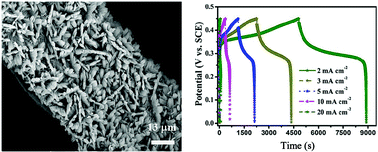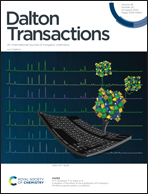MOF-assisted construction of a Co9S8@Ni3S2/ZnS microplate array with ultrahigh areal specific capacity for advanced supercapattery†
Abstract
Transition metal sulfides are important candidates of battery-type electrode materials for advanced supercapatteries due to their high electric conductivity and electrochemical activity. The Co9S8@Ni3S2/ZnS composite microplate array was prepared by a metal–organic framework-assisted strategy because the electrochemical properties of composite arrays are governed by the synergistic effects of their diverse structures and compositions. As a battery-type material, the Co9S8@Ni3S2/ZnS electrode expressed an ultrahigh areal specific capacity of 8192 C cm−2 at the current density of 2 mA cm−2, and excellent cycling stability of 79.7% capacitance retention after 4000 cycles. An assembled supercapattery device using the Co9S8@Ni3S2/ZnS microplate array as a positive electrode and active carbon as the negative electrode delivered a high energy density of 0.377 mW h cm−2 at a high power density of 1.517 mW cm−2, and outstanding retention of 95.2% after 5000 cycles. As a result, the obtained Co9S8@Ni3S2/ZnS shows potential for applications in high-performance supercapattery.



 Please wait while we load your content...
Please wait while we load your content...